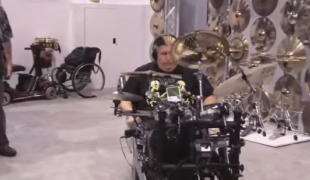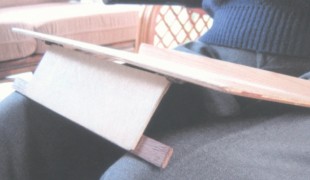- 11631
- 646
- 13
- 9
- 0
- Help Ukraine
Über die Lösung
Die Tactile Stave Notation sind Notenblätter, die im 3D-Druckverfahren hergestellt werden. Die Noten haben ein leichtes Profiel und können so durch Sehbehinderte und Nichtsehbehinderte gleichzeitig gelesen werden. Mann muss also nicht erst Braille lernen, um die Noten vom Blatt lesen zu können.
Schon während ihrer Kindheit verschlechterte sich Yeajis Sehfähigkeit und mit 13 war sie erblindet. Im Laufe der Jahre wurde ihr das Piano spielen immer wichtiger, 2007 ging sie dann in die USA. Sie war auf der UW-Madison School of Music angenommen worden.
“Während einer Probe sagte mal jemand: 'Oh, hier ist eine Haarnadel'. 'Was tut denn eine Haarnadel zur Sache?', fragte ich. Ich hatte keine Haarnadel und begriff nicht, dass es sich um ein Zeichen auf dem Notenblatt handelte. Als man es mir später erklärte, habe ich mich ziemlich geschämt”, so Yeaji.
Für ihre Promotion an der UW-Madison School of Music arbeitete sie dann an dem innovativen Notensystem für Sehbehinderte. Sie entwickelte erst verschiedene Prototypen, u.a. aus Plastik.
Sie fing auch an zu untersuchen, wie man die Entwürfe auf Papier drucken könnte und versuchte gleichzeitig, die Produktionskosten finanziert zu bekommen.
Auszug aus: http://bit.ly/1gVOeNw
Diese Lösung enthält keinen Hinweis weder auf die Verwendung von Arzneimitteln, Chemikalien oder biologische Stoffe (einschließlich Lebensmitteln) noch auf invasive Geräte, anstößige, kommerzielle oder inhärent gefährliche Inhalte. Diese Lösung wurde nicht medizinisch validiert. Vorsicht! Wenn Sie irgendwelche Zweifel haben, wenden Sie sich bitte an einen Arzt.
DISCLAIMER: This story was written by someone who is not the author of the solution, therefore please be advised that, although it was written with the utmost respect for the innovation and the innovator, there can be some incorrect statements. If you find any errors please contact the patient Innovation team via info@patient-innovation.com
-
-
260
-
0
-
3003

Der Mensch schafft ein Gerät, um Blinden zu helfen, Braille zu lernen
COMMUNICATION: Communicating, whether by speaking, listening, or other means
Reading
Blindness
Visual Impairment
Educational/Leisure device (book, toy, game...)
Vision problems
Memory loss
Managing Neurological Disorders
Promoting inclusivity and social integration
Neurology
Ophthalmology
Pediatrics
United States
-
-
-
519
-
0
-
8502

Hybrid Wälzlager Drum Kit
-
-
-
378
-
0
-
3967

Ein querschnittsgelähmter Mann entwirft eine Buchstütze für den Rollstuhl
Reading
MOVING IN A WHEELCHAIR: Moving using a wheelchair.
Paralysis
Neuromuscular Disorders
Spinal Cord and Nerve Root Disorders
Amyotrophic Lateral Sclerosis
Cerebral Palsy
Cervical spinal cord injury/Tetraplegia
Educational/Leisure device (book, toy, game...)
Walking Aid (wheelchair/walker/crutches)
Muscle cramps or spasms
Difficulty coordinating movements
Stiffness or rigidity (difficulty moving)
Paralysis of the legs and lower body
Muscle weakness
Difficulty speaking or understanding speech
Promoting self-management
Managing Neurological Disorders
Promoting inclusivity and social integration
General and Family Medicine
Neurology
Belgium
-
 de
de